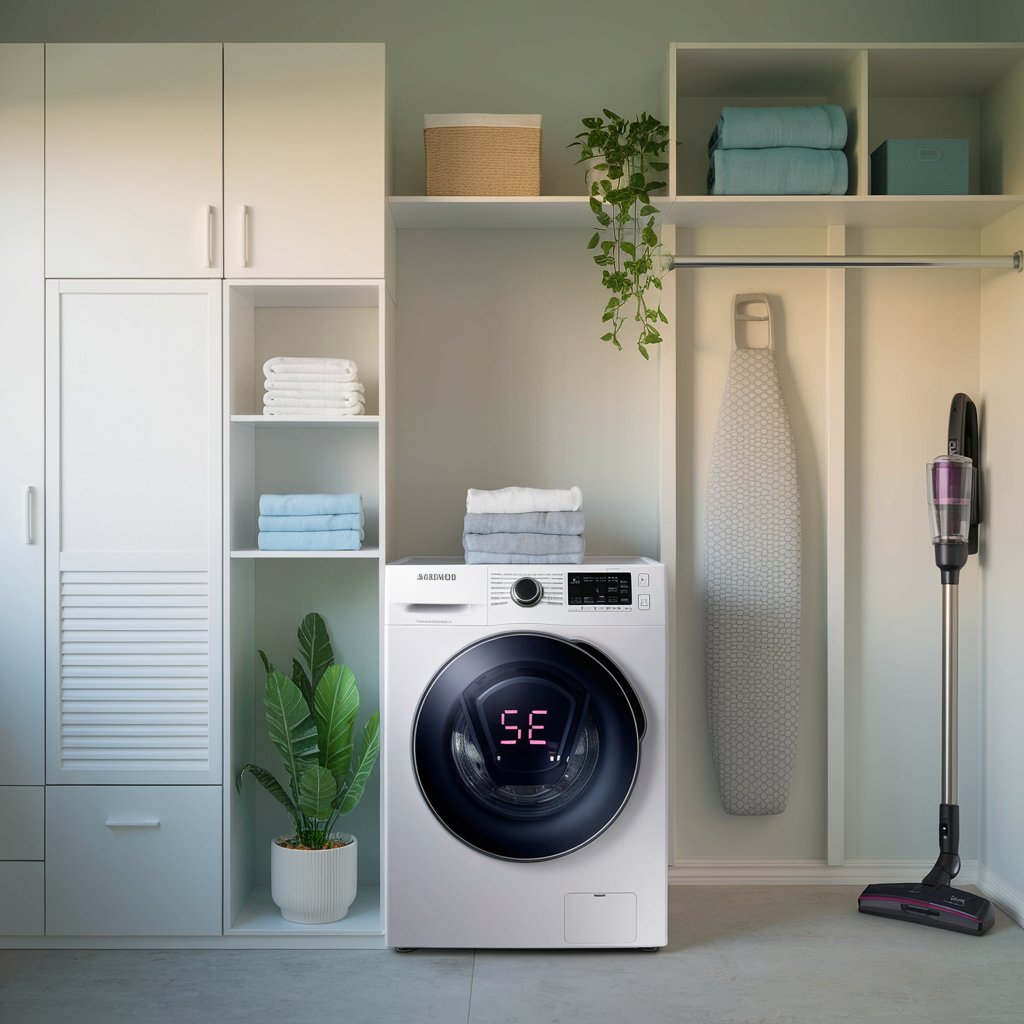Have you ever stood in front of your washing machine, laundry basket in hand, only to find that it’s taking forever to fill up? The frustration builds as you realize something is amiss. Low water flow in your washing machine isn’t just an inconvenience; it’s a disruption to your daily life. Let’s explore how to fix this issue and bring ease back to your household chores.
Understanding the Impact of Low Water Flow
A washing machine with low water flow doesn’t just slow down your laundry routine; it can lead to improperly cleaned clothes, wasted time, and increased stress. Imagine preparing for an important event, only to find your favorite outfit hasn’t been thoroughly cleaned due to insufficient water. This issue touches not just the mechanics of your appliance but also the rhythm of your daily life.
Recognizing the signs early can save you from bigger headaches down the line. Slow-filling cycles, error codes, or clothes that aren’t properly rinsed are all indicators that your washing machine is struggling with water intake.
Common Causes of Low Water Flow
Understanding the root causes can help you address the problem effectively. Here are the most common reasons for low water flow in washing machines:
Clogged Inlet Filters
Inlet filters are small screens located where the hoses connect to the washing machine. Over time, they can become clogged with sediment, dirt, and mineral deposits, especially if you have hard water.
Faulty Water Inlet Valve
The water inlet valve controls the flow of water into the washing machine. If it’s malfunctioning, it may not open fully, restricting water flow.
Kinked or Damaged Hoses
Hoses that are bent, kinked, or damaged can impede water flow. Physical obstructions or wear and tear over time can cause these issues.
Low Household Water Pressure
If your home’s water pressure is low, your washing machine won’t receive enough water. This could be due to issues with your plumbing system or the municipal water supply.
Malfunctioning Pressure Switch
The pressure switch signals the washing machine to stop filling when the correct water level is reached. If it’s faulty, it might prevent the machine from filling properly.
Lime Scale and Mineral Buildup
Hard water can cause lime scale and mineral deposits to build up inside the washing machine’s components, restricting water flow.
Detailed Step-by-Step Solutions
Now that we’ve identified potential causes, let’s delve into detailed solutions to fix low water flow in your washing machine.
Safety Precautions
Your safety is paramount. Before starting any repair work:
- Unplug the Washing Machine: Disconnect it from the electrical outlet to prevent electric shock.
- Turn Off Water Supply: Shut off the valves supplying water to the machine.
- Wear Protective Gear: Use gloves and safety glasses to protect against debris and sharp edges.
Cleaning the Inlet Filters
- Locate the Water Inlet Hoses: Typically found at the back of the washing machine.
- Disconnect the Hoses: Place a bucket underneath to catch any water. Use adjustable pliers if the connections are tight.
- Remove the Inlet Filters: Gently pull out the small screens from the inlet valves.
- Clean the Filters: Rinse under warm running water. Use a soft brush to remove stubborn debris.
- Inspect the Filters: Check for damage. Replace them if they appear torn or excessively clogged.
- Reinstall the Filters and Hoses: Reassemble everything securely.
- Test the Machine: Turn on the water supply, plug in the machine, and run a short cycle to see if the issue is resolved.
By cleaning the inlet filters, you may restore normal water flow, saving time and avoiding unnecessary costs.
Testing and Replacing the Water Inlet Valve
- Access the Inlet Valve: Remove the top or back panel of the washing machine, following the manufacturer’s instructions.
- Inspect the Valve: Look for signs of damage, corrosion, or electrical issues.
- Test the Solenoids: Use a multimeter set to the ohms setting. Each solenoid should read between 500-1500 ohms. A reading of zero or infinity indicates a faulty solenoid.
- Replace the Valve if Necessary: Purchase a compatible replacement part.
- Disconnect Wires and Hoses: Take note of their positions.
- Remove the Old Valve: Unscrew any mounting screws.
- Install the New Valve: Attach hoses and wires to their respective places.
- Reassemble the Machine: Replace the panels securely.
- Run a Test Cycle: Ensure the machine fills correctly.
Replacing a faulty inlet valve can significantly improve water flow and the overall performance of your washing machine.
Inspecting and Replacing Hoses
- Examine External Hoses: Look for visible kinks, bends, or cracks.
- Check Internal Hoses: If comfortable, open the machine to inspect internal hoses.
- Straighten Any Kinks: Adjust the position of the hoses to eliminate bends.
- Replace Damaged Hoses:
- Purchase Replacement Hoses: Ensure they are compatible with your machine.
- Disconnect Old Hoses: Be prepared for residual water.
- Install New Hoses: Tighten connections securely to prevent leaks.
- Verify Connections: Make sure all hoses are properly attached and free of obstructions.
- Test the Machine: Run a cycle to confirm improved water flow.
Regular inspection of hoses can prevent leaks and maintain optimal water flow.
Checking Household Water Pressure
- Test Water Pressure at a Faucet:
- Use a Pressure Gauge: Attach it to an outdoor faucet or the washing machine’s water supply line.
- Read the Pressure: Normal household water pressure ranges between 40-60 psi.
- Inspect the Pressure Regulator:
- Locate the Regulator: Often found near the main water shutoff valve.
- Adjust if Necessary: Turn the screw to increase pressure, following the manufacturer’s guidelines.
- Check for Clogs in Plumbing:
- Look for Signs: Reduced flow in multiple fixtures may indicate a clog.
- Contact a Plumber: Professional help may be needed to clear obstructions.
- Consult Your Water Supplier:
- Report Low Pressure: There might be maintenance or issues affecting your area.
- Ask for Assistance: They may provide solutions or adjustments.
Ensuring adequate household water pressure is crucial not just for your washing machine but for all water-related appliances.
Examining the Pressure Switch
- Access the Pressure Switch:
- Locate It: Usually found inside the control panel.
- Refer to the Manual: For exact location and safety precautions.
- Inspect the Pressure Hose:
- Check for Blockages: Blow through the hose to ensure it’s clear.
- Look for Damage: Replace if cracked or brittle.
- Test the Switch:
- Use a Multimeter: Set to the continuity setting.
- Perform the Test: The switch should open and close circuits when pressure is applied.
- Replace if Faulty:
- Purchase a Compatible Switch: Match it with your machine’s model.
- Install Carefully: Follow the wiring diagram to reconnect wires correctly.
A malfunctioning pressure switch can prevent the machine from filling properly, leading to low water levels.
Removing Lime Scale and Mineral Deposits
- Run a Cleaning Cycle:
- Use a Descaling Agent: Commercial products or a mixture of vinegar and baking soda.
- Set the Machine: Run a hot water cycle without laundry.
- Clean Internal Components:
- Access the Drum and Dispenser: Wipe down with a soft cloth soaked in vinegar.
- Scrub Stubborn Areas: Use a toothbrush for tight spots.
- Install a Water Softener:
- Whole-House System: Treats all water entering your home.
- Inline Filter: Installed directly on the washing machine’s water supply line.
- Regular Maintenance:
- Repeat Cleaning Cycles: Every few months to prevent buildup.
- Use Softening Agents: In your laundry detergent to reduce mineral deposits.
Addressing lime scale and mineral buildup not only improves water flow but also extends the life of your washing machine.
Preventive Maintenance Tips
- Regularly Inspect Hoses and Connections: At least twice a year, check for signs of wear or damage.
- Clean Inlet Filters Periodically: Every three months, especially if you have hard water.
- Use High-Quality Detergents: Low-quality detergents can contribute to buildup.
- Avoid Overloading the Machine: Follow the manufacturer’s recommendations to prevent strain on components.
- Keep the Machine Level: An unbalanced machine can cause internal parts to misalign or wear unevenly.
- Schedule Professional Maintenance: Annual check-ups can catch issues before they become major problems.
Preventive maintenance is key to ensuring your washing machine operates efficiently and lasts longer, saving you money and hassle in the long run.
When to Seek Professional Help
While many issues can be resolved with a bit of DIY effort, some situations require the expertise of a professional technician:
- Persistent Low Water Flow: If the problem continues after trying the above solutions.
- Electrical Issues: Signs of electrical malfunctions, such as burning smells or tripped breakers.
- Complex Repairs: Involving internal components beyond your comfort level.
- Warranty Considerations: If your machine is under warranty, unauthorized repairs may void it.
Don’t hesitate to seek professional assistance. Expert technicians have the tools and knowledge to diagnose and fix complex issues safely and efficiently.
Frequently Asked Questions
Q: Can I continue using my washing machine if it’s filling slowly?
A: While it may be tempting, using the machine with low water flow can lead to poor cleaning results and may strain the machine’s components, potentially causing more significant issues over time.
Q: How do I know if my water inlet valve is faulty?
A: Signs include the machine not filling at all, filling only on certain cycles, or filling with water even when turned off. Testing with a multimeter can confirm if the solenoids are functioning.
Q: Is hard water harmful to my washing machine?
A: Yes, hard water can cause mineral buildup in hoses, valves, and other components, leading to reduced efficiency and potential damage over time.
Q: How often should I perform maintenance on my washing machine?
A: Regular maintenance should be performed every six months, with more frequent checks if you notice any performance issues.
Q: Can I use vinegar to clean my washing machine?
A: Yes, white vinegar is an effective, natural cleaner that can help remove mineral deposits and deodorize your machine.
Conclusion
Experiencing low water flow in your washing machine can be a source of frustration and inconvenience, disrupting the harmony of your daily routine. However, with a bit of understanding and effort, you can diagnose and fix many of these issues yourself.
By learning how to fix low water flow in your washing machine, you’re not just repairing an appliance; you’re reclaiming your time and peace of mind. Regular maintenance and prompt attention to problems can keep your washing machine running smoothly, ensuring that laundry day doesn’t become a dreaded chore.
Remember, you’re not alone in this. Many have faced the same challenges and found solutions that brought comfort back into their homes. If ever in doubt, professional help is just a call away. Here’s to hassle-free laundry days ahead!


